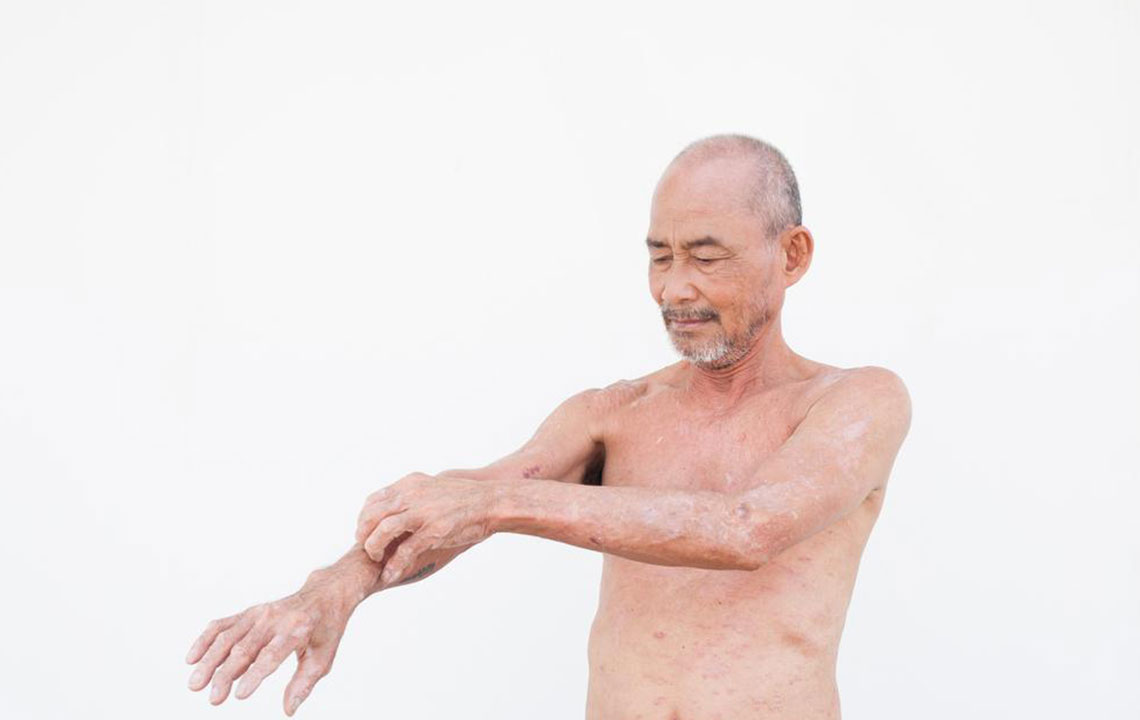All You Need to Know about Eczema
Eczema can be regarded as a catch-all term which is used for describing a host of medical conditions which represents itself in itchy, bumpy and rough skin conditions owing to inflammation as well as irritation. Eczema skin condition is most commonly referred to as atopic dermatitis, which typically begins at a very young age. However, it can occur at any age. This condition comes with a genetic predisposition, which is triggered by environmental conditions, stress, food products, infections, and contact allergies.
How can eczema be diagnosed?
An expert dermatologist diagnoses eczema skin typically by examining the skin clinically and evaluating the medical history of the concerned individual.

Normally, it involves creases on the skin in certain areas such as elbows and knees. In the case of kids aged below four years, eczema is more common in forehead, cheeks, and limbs. Many people have eczema in the hands and feet along with other random areas of the body. It is very crucial to know the various causes of the problem to determine the treatment that would work the best.
What are the different types of eczema?
It is quite surprising that there are at least eleven different types of skin conditions, which can pave the way for eczema. For preparing a rational treatment plan, it is crucial to distinguish and know the type of eczema that a person is infected with.
- Atopic dermatitis
When it comes to skin eczema, atopic dermatitis is one of the most common type. It tends to begin at an early stage of life, but it is believed not to be based on an allergy. The most common outcome of atopic dermatitis is rashes on the neck, elbow, knee, and ankles. - Allergic contact dermatitis
This type of eczema occurs after repeated exposure to the same substance that is regarded as the allergen. As a result of the contact, the immune system of the body gets activated near the site of the contact and leads to irritation and inflammation. Poison ivy allergy is one such type of eczema. - Stasis dermatitis
Commonly occurs on the lower legs of individuals, stasis dermatitis attacks people with less circulation in the lower portion of the body. - Irritant dermatitis
As the name suggests, this type of eczema occurs with repeated exposure to an irritant. - Fungal dermatitis
This can lead to an identical pattern in the skin surface, and the fungus can be seen if the skin is scraped under the microscope or cultivated in culture. - Scabies
This type of skin eczema stems from an infestation of the itch mite and may also lead to a rash which is quite similar to the other forms of eczema as well. - Dyshidrotic eczema
Even though this type of the disease is common, it is often not diagnosed. It affects the hands and often, feet. It produces an itchy rash comprised of tiny vesicles on the sides of the toes and fingers. - Seborrheic dermatitis
This type of skin eczema produces a rash on the scalp, ears, face and in the middle of the chest. When it comes to infants, this type of eczema can lead to oozy rash behind the ears. Such rash can affect the entire body.
All patient suffering from an eczema skin condition complain about itching. Moreover, when the appearance of almost all types of eczema is similar to prominent red patches, the distribution of the condition can help in differentiating them one from another. For instance, atopic dermatitis occurs in the elbow and knee, whereas stasis dermatitis tends to affect the lower leg.
How is eczema skin condition treated?
The treatment of acute skin eczema in the case of significant weeping along with oozing needs constant applications of diluted solutions of plain water. It can also be applied in the form of compress and evaporation. After the application of compress, one must comfortably place the affected parts in the open for evaporation. As soon as the weeping diminishes, doctors recommend the use of topical steroids which may also be accompanied by injections or medications.
It is crucial to note here that each type of eczema requires a specific plan of therapy. Those eczema skin conditions which are caused by fungi and scabies can be treated permanently, while those belonging to a severe category may take some time to heal.

